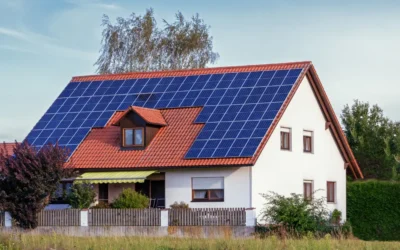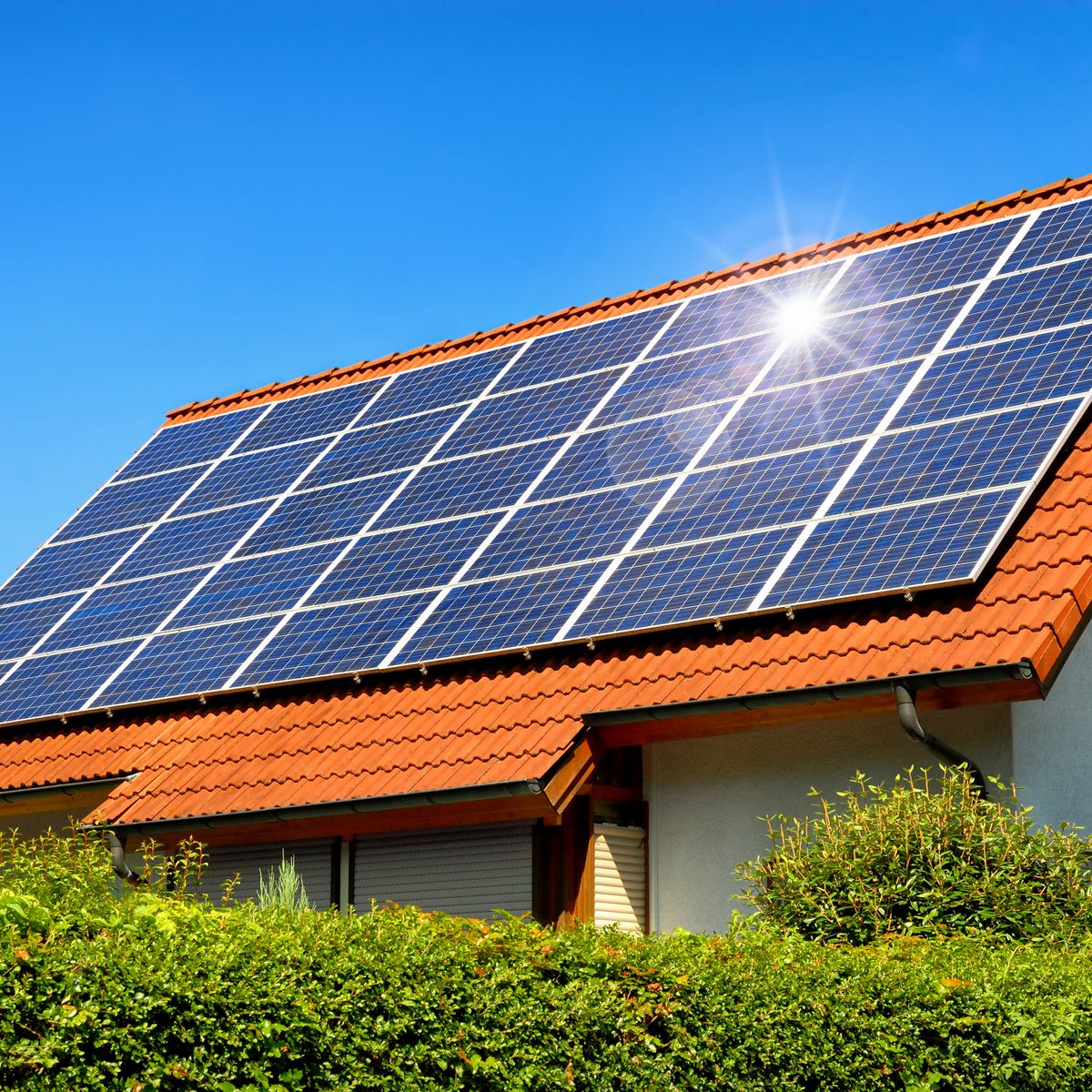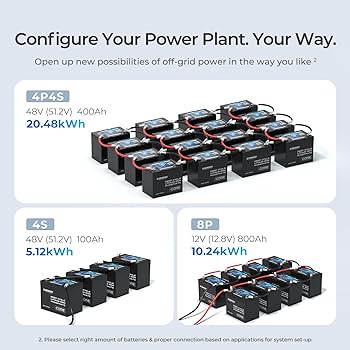A solar power system for a home is an efficient and environmentally friendly way to generate electricity. By harnessing the power of the sun, homeowners can reduce their reliance on traditional energy sources and lower their carbon footprint.
Solar panels, an inverter, and a battery storage system are the main components of a solar power system for a home. Installing a solar power system can also lead to long-term cost savings on energy bills and increase the value of the property.
With advancements in technology, solar power systems have become more affordable and accessible to homeowners.

Credit: www.build-review.com
Table of Contents
Benefits Of Solar Power
Are you looking for a sustainable and cost-effective way to power your home? Solar power is the answer! With the advancements in technology and decreasing costs, solar power systems have become a popular choice for homeowners. Not only do they help reduce your energy bills, but they also have a positive impact on the environment. Let’s delve into the benefits of solar power in more detail.
Reduced Energy Bills
Your energy bills will thank you once you switch to solar power. By harnessing the sun’s energy, you can significantly decrease your reliance on traditional power sources. Solar panels on your roof convert sunlight into electricity, reducing the amount of electricity needed from the grid. As a result, you’ll notice a substantial decrease in your monthly energy bills, saving you money in the long run. Additionally,
- Lower dependence on the grid means protection from rising energy costs.
- Solar power allows for net metering, where excess energy generated can be credited and used during times of high consumption.
- Government incentives and tax credits are available for homeowners who install solar power systems.
Environmental Impact
When it comes to the environment, solar power is a game-changer. By switching to solar energy for your home, you are significantly reducing your carbon footprint. Solar power is a clean, renewable energy source that produces no harmful emissions during operation. Here’s how solar power positively impacts the environment:
- Promotes clean air by reducing greenhouse gas emissions.
- Conserves water resources as solar power requires minimal water for operation compared to traditional power generation methods.
- Decreases reliance on fossil fuels, reducing the demand for drilling and extraction.
- Contributes to a sustainable future for generations to come.
Solar power is not only beneficial for homeowners but also for the planet. By making the switch, you can enjoy reduced energy bills while making a positive impact on the environment. So, why wait? Embrace the power of the sun and start enjoying the benefits of solar energy today!
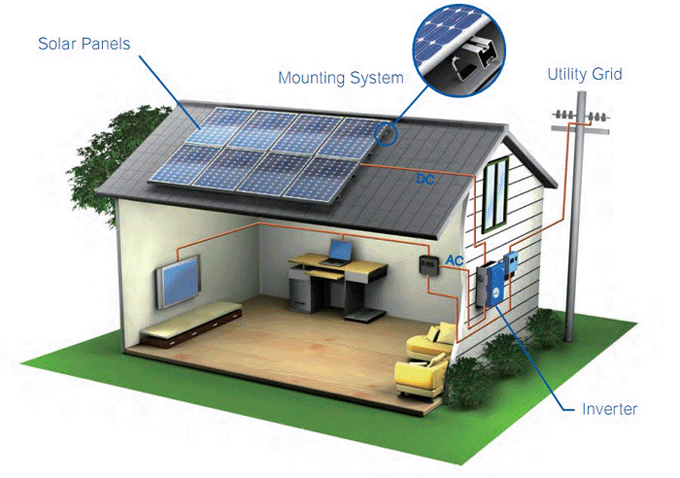
Credit: www.gogreensolar.com
Components Of A Home Solar Power System
When it comes to setting up a solar power system for your home, it’s essential to understand the key components that make up the system. The components of a home solar power system include solar panels, inverter, and battery storage. Each of these components plays a crucial role in harnessing solar energy and converting it into usable electricity for your home.
Solar Panels
Solar panels are the foundational components of a home solar power system. They are responsible for capturing sunlight and converting it into direct current (DC) electricity through the photovoltaic effect. The energy produced by solar panels is then utilized to power your home’s electrical devices and appliances.
Inverter
The inverter serves as a vital component of the solar power system, transforming the DC electricity generated by the solar panels into alternating current (AC) electricity, which is used to power the majority of home appliances. The inverter ensures that the electricity produced by the solar panels is compatible with the electrical grid and can be used in your home.
Battery Storage
Battery storage is an essential element of a home solar power system, allowing you to store excess electricity generated by your solar panels for use during periods of low sunlight or at night. This enables you to maximize the self-consumption of solar energy and reduces reliance on the grid, promoting energy independence and efficiency.
Calculating Solar Power Needs
Calculating the specific solar power needs of your home is an essential step in transitioning to renewable energy. By accurately assessing your energy consumption, determining the required panel size, and factoring in system efficiency, you can optimize your solar power system for maximum effectiveness.
Assessing Energy Consumption
To accurately determine your energy requirements, it is crucial to assess your current energy consumption. Start by reviewing your utility bills from the past year to identify trends and average monthly usage. Consider any significant changes in your lifestyle or household that may impact future energy needs. Take note of seasonal variations, such as increased cooling or heating during extreme weather.
- Review utility bills from the past year for consumption trends
- Note any significant lifestyle changes or household additions
- Consider seasonal variations in energy usage
Determining Panel Size
The size of your solar panels directly impacts the amount of electricity your system can generate. To accurately determine the required panel size, consider the average daily energy consumption. Remember that factors like panel orientation, shading, and geographical location can affect efficiency. It is vital to consult an expert or use online solar calculators to determine the ideal panel size for your specific energy needs.
- Consider average daily energy consumption
- Take into account factors that affect panel efficiency
- Consult experts or use online solar calculators for accurate sizing
Factoring In System Efficiency
System efficiency plays a crucial role in optimizing your solar power system. It reflects how effectively your panels convert sunlight into usable energy. The efficiency of solar panels can vary depending on factors like the quality of equipment, installation, and maintenance. It is vital to consider both the initial efficiency rating and any potential degradation over time. Look for high-quality panels and consult with reputable solar system providers for the best efficiency options.
- Understand the role of system efficiency
- Consider factors that impact solar panel efficiency
- Look for high-quality panels and consult reputable providers
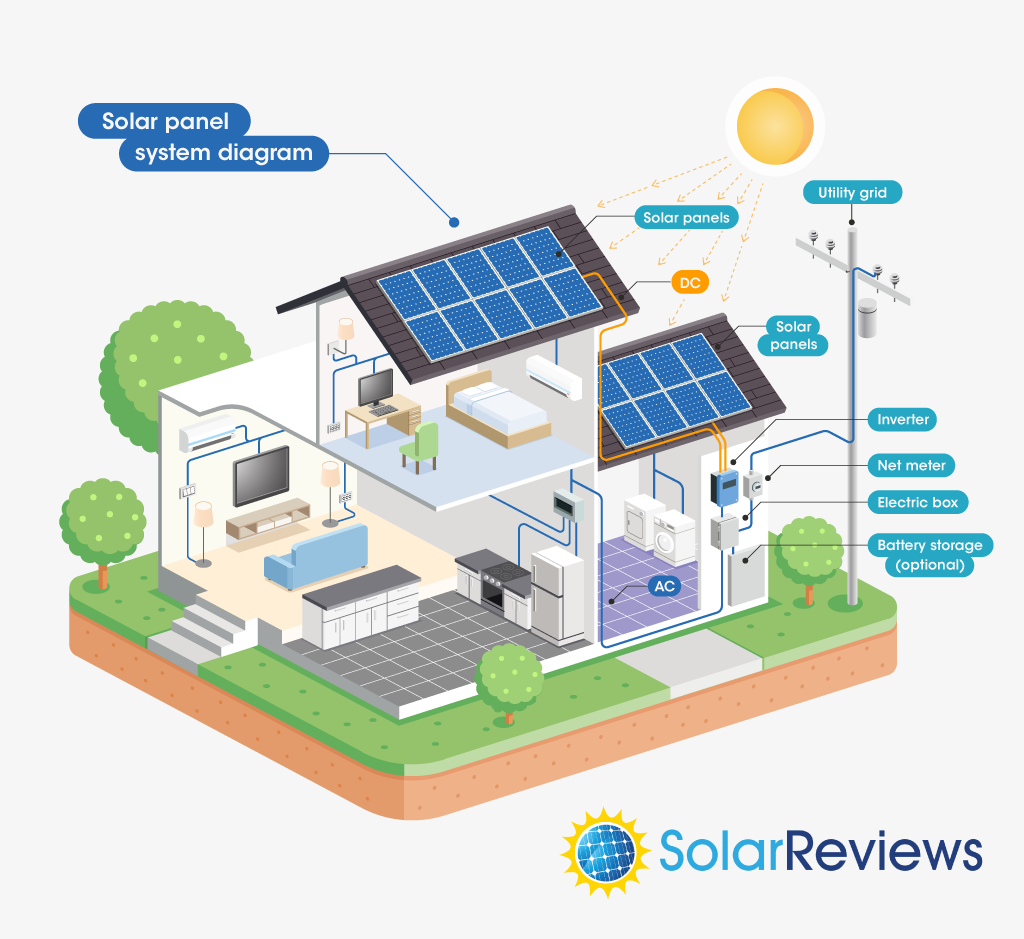
Credit: www.solarreviews.com
Installation Process
Installing a solar power system for your home is a smart decision that can help you save on electricity bills and reduce your carbon footprint. The installation process involves several steps, ensuring the system is properly assessed, mounted, and connected for optimal performance. Let’s take a closer look at each step:
Site Assessment
Before installing a solar power system, a thorough site assessment is crucial to determine the suitability and efficiency of the system. A qualified technician will evaluate your property’s solar potential by considering factors such as roof orientation, shading obstacles, and available space.
To ensure maximum sunlight exposure, it is important to position the solar panels in an area with minimal shading throughout the day. By assessing the site, the technician can determine the best location for the solar panels, maximizing their efficiency and energy output.
Panel Mounting
Once the site assessment is complete, the next step is to mount the solar panels on your roof or on a ground-mounted racking system. The installation team will securely attach the mounting hardware to ensure that the panels are sturdily positioned and able to withstand weather conditions.
The angle and orientation of the panels are also crucial for optimal performance. Depending on your location and the desired energy output, the installation team will adjust the panels to face the best direction, typically south-facing in the northern hemisphere. This allows the panels to capture the maximum amount of sunlight and generate as much electricity as possible.
Wiring And Connection
Proper wiring and connection are essential for the solar power system to function efficiently and safely. The installation team will carefully connect the solar panels to an inverter, which converts the direct current (DC) generated by the panels into alternating current (AC) that can be used to power your home.
During the wiring process, great attention is given to safety measures, such as using appropriate conduits and securing all connections. This ensures that the solar power system is not only effective but also compliant with electrical standards and regulations.
Once the electrical connection is established, the solar power system is ready to generate clean and renewable energy for your home. Remember to consult with a professional installation team to ensure that the process is carried out smoothly and efficiently.
Maintenance And Upkeep
Proper maintenance and upkeep are crucial for a solar power system installed in a home. Regular inspections and cleaning help ensure optimal performance, prolong the system’s lifespan, and maximize savings on electricity bills. Hire professionals if necessary to maintain the efficiency of your solar power system.
Owning a solar power system for your home comes with the responsibility of ensuring its proper maintenance and upkeep.
Regular maintenance not only keeps your system running efficiently but also prolongs its lifespan. It’s important to pay attention to routine cleaning, monitoring performance, and replacing components as needed to ensure your solar power system continues to perform optimally for years to come.
Routine Cleaning
Routine cleaning of your solar panels is essential to maintain their efficiency. Use a gentle soap solution and a soft brush or cloth to remove dirt, dust, and debris that may accumulate on the panels.
Be sure to clean the panels regularly to prevent any build-up that could hinder their performance. It’s also important to check for any shading that may occur from nearby trees or structures and trim back any obstructing branches.
Monitoring Performance
Regularly monitoring the performance of your solar power system is crucial in identifying any issues that may arise. Keep an eye on the output levels of your system to ensure they are consistent with what is expected.
If you notice a significant drop in performance, it may indicate a problem that needs to be addressed. Some solar power systems come with monitoring software that can provide detailed insights into your system’s performance, helping you to spot any anomalies quickly.
Replacing components
Replacing components as needed is a key part of maintaining a solar power system. Over time, certain components such as inverters or batteries may need to be replaced due to wear and tear.
It’s important to work with a qualified technician to carry out these replacements and ensure that they are done correctly. Regular maintenance can help identify potential issues early, allowing for proactive replacement of components before they fail.
Taking the time to properly maintain and upkeep your solar power system will ensure that it continues to provide clean and sustainable energy for your home for many years to come.
By staying on top of routine cleaning, monitoring performance, and replacing components as needed, you can maximize the efficiency and longevity of your solar power system while minimizing the need for costly repairs in the long run.
Conclusion
Incorporating a solar power system into your home can offer significant long-term benefits. From reducing energy costs to contributing to environmental sustainability, the advantages are numerous. With the advancements in technology, solar power systems have become more accessible and efficient.
By making this sustainable choice, you are not only benefiting your household but also the planet.




